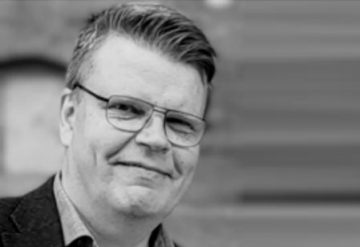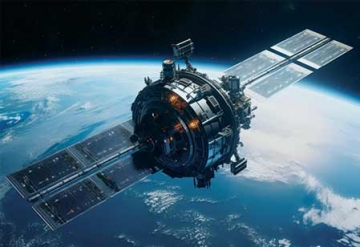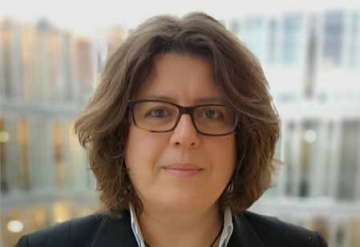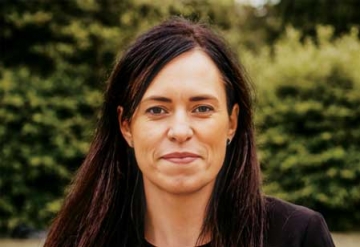THANK YOU FOR SUBSCRIBING

Embedding QHSE Excellence in Global Engineering Operations
David Burge, Global QSHE & Travel Security Director, Buro Happold

 David Burge, Global QSHE & Travel Security Director, Buro Happold
David Burge, Global QSHE & Travel Security Director, Buro HappoldDavid Burge is the Global QHSE & Travel Director at Buro Happold. With deep expertise in quality, health, safety, environment, and international travel governance, he leads strategic initiatives that ensure global compliance, sustainability, and operational efficiency. His leadership has been instrumental in pioneering hybrid ISO and internal certification models, aligning digital solutions with engineering best practices, and driving continuous improvement across complex, multinational project environments.
Harmonizing Global Standards with Regional Realities
My professional background, combined with my leadership experience, has provided me with a comprehensive understanding of the complexities involved in managing quality, health, safety, and environmental (QHSE) aspects across global regions. This has shaped my approach at Buro Happold, emphasizing proactive risk management, continuous improvement, and fostering a culture of safety and sustainability. I also leverage my travel management expertise to ensure seamless coordination and communication among global teams, which is crucial for maintaining high QHSE standards.
Managing QHSE initiatives globally presents several challenges, including varying regulatory requirements, cultural differences, and logistical complexities. To address these, I’ve implemented standardized processes and protocols that ensure consistency and compliance across all regions.
Buro Happold is certified to ISO 9001 (Quality Management Systems), ISO 14001 (Environmental Management Systems), and ISO 45001 (Safety Management Systems). As we’ve grown globally and begun operating in serviced offices, we’ve had to adapt our certification process. ISO 9001 remains a regional certification. I believe we may be one of the first businesses to implement a split ISO certification model, combining internal HS&E management systems for serviced spaces with full ISO compliance for leased locations.
Specifically, Buro Happold offices that are leased, and where we control utilities and life safety—maintain ISO 14001 and 45001 certifications, covering over 60 percent of our business. Offices in serviced environments, such as WeWork and utility spaces, are certified under our internal BH management system.
“The goal is not just compliance— but creating safer, smarter and more sustainable outcomes across every region we operate.”
Both types of locations follow an online compliance planner: ISO-certified offices use a full compliance version, while serviced spaces follow a reduced planner incorporating key elements of both ISO 14001 and 45001. All compliance planners are audited internally. We are currently finalizing the BH logo and certification for these internal standards.
ISO 19650 (BIM) and PAS 2080 are currently certified for the UK only, but our master plan is to roll these out across all areas of operation in due course.
Additionally, I prioritize training and development programs to equip our teams with the knowledge and tools needed to navigate local regulations and best practices. Effective communication and collaboration platforms also play a vital role in enabling real-time decision-making and risk mitigation.
Designing Safety, Sustainability, and Innovation from the Ground Up
Integrating QSHE goals into construction projects requires a holistic approach—starting in the design phase and continuing through delivery. At Buro Happold, we embed sustainability and safety into our design principles, ensuring that projects not only meet compliance standards but also deliver long-term value to the environment and community.
We are in the process of achieving PAS 2080 certification. We engage stakeholders early to align QSHE objectives with broader project goals and use advanced modeling and simulation tools, such as BIM, to anticipate and mitigate risks. “Safe by design” is a KPI for all engineering employees and reflects our commitment to prevention as much as performance.
Looking ahead, the future of construction and QHSE management will be shaped by rapid advances in automation, artificial intelligence, and sustainable technologies. AI and automation are already enhancing safety by reducing human error and helping us predict hazards before they occur. Meanwhile, green building materials and renewable energy solutions are setting new standards for environmentally responsible design and delivery.
At Buro Happold, we use real-time monitoring systems to tra ck safety and environmental metrics, allowing us to respond swiftly to any deviations. Data analytics helps us uncover trends and areas for improvement, enabling datadriven decisions at both the project and enterprise levels.
Digital solutions such as BIM and integrated project management platforms enhance cross-functional collaboration, streamline workflows, and reduce risk across project lifecycles. The result is a more agile, measurable, and transparent QHSE environment.
My advice to fellow leaders is simple: embrace innovation and invest in continuous learning. Success in the future will depend on our ability to adapt to evolving technologies while staying true to our core mission—protecting people, projects, and the planet.
Read Also
Development of the Logistics Warehousing Market in Brazil
Driving Innovation and Preserving Tradition
Operational Leadership VS Field Leadership in the Utility Construction Business
People-First Innovation: Developing Virtual Design and Construction (VDC) Training Programs to Empower Field Team Members
Sustainable Projects: Aligning Business and Purpose in Latin America
Engage Smarter: Why Constraints Matter More Than Hazards

 Copyright © 2025 All Rights Reserved | by:
Copyright © 2025 All Rights Reserved | by: Construction Tech Review
| Subscribe | About us | Sitemap| Editorial Policy| Feedback Policy














